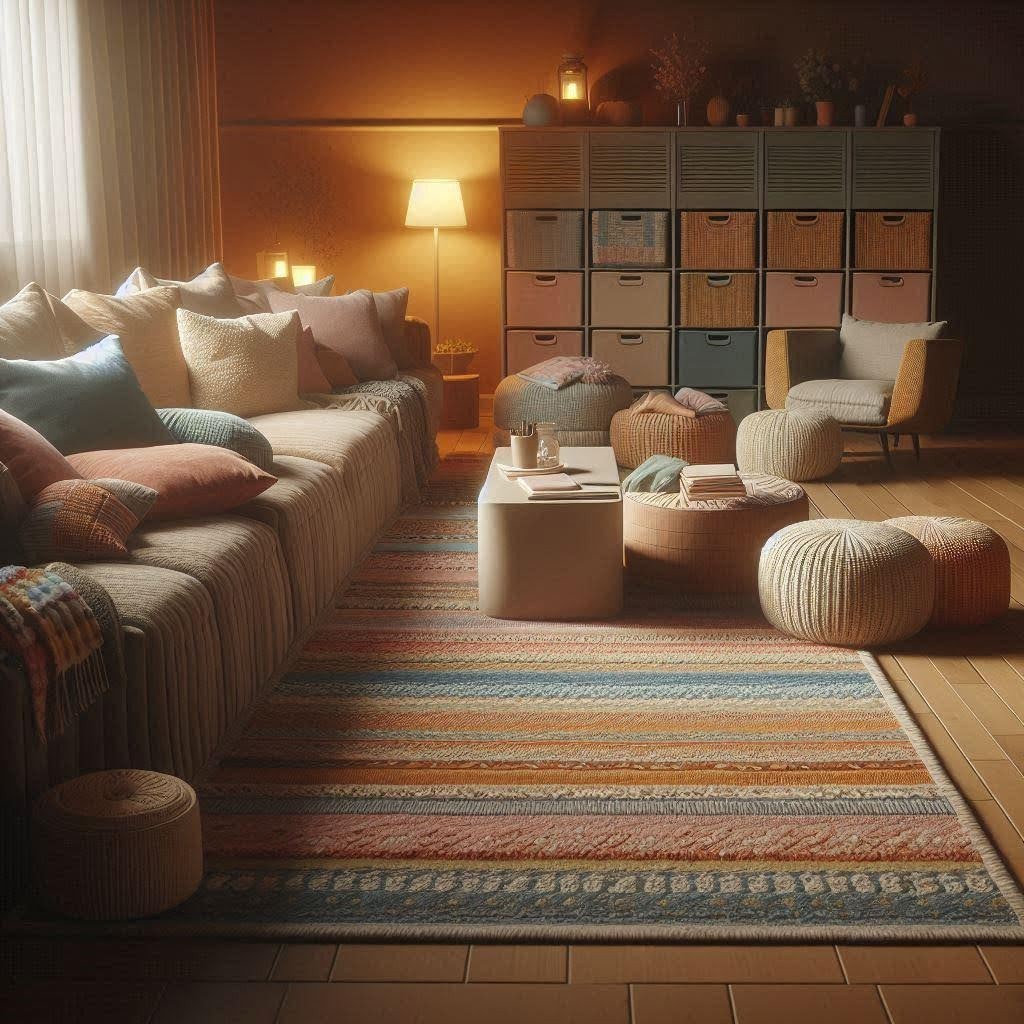Making a family room feel comfortable and calm for everyone can be a challenge, especially when sensory sensitivities come into play. Small upgrades that focus on sound, texture, and light can make a big difference.
Whether you want quick fixes or weekend projects, here are some sensory-smart ideas to help create a soothing space that works for your whole family.
Quick Wins for a Calm Space
Sometimes the easiest changes can deliver noticeable results right away. Try these quick wins that don’t take much time or money but really pay off.
- Layered Rugs: Adding a few area rugs on top of your floor softens sounds and adds warmth underfoot. You can mix textures and sizes, creating zones that feel cozy and inviting. This simple change helps reduce echo and gives sensory-sensitive kids a comfortable place to play or relax.
- Door Sweeps: Installing door sweeps stops noises and odors from other rooms, helping to create a quiet environment. They also help control drafts, improving comfort for everyone.
- Felt Pads on Furniture: Furniture drags or sudden noises can be startling. Felt pads on chair and table legs soften movement sounds and protect floors. They make everyday furniture less disruptive.
Weekend Projects That Give Big Payoffs
When you have some extra time, try these upgrades that add layers of comfort and style while helping manage sensory input.
Dimmer Switches and Warm Bulb Swaps
Replacing harsh overhead lighting with dimmers lets you adjust brightness based on mood or activity. Switching to warm-colored bulbs reduces eye strain and creates a more calming atmosphere. These little changes make a room feel less clinical and more like a retreat.
Clutter Zoning and Closed Storage
Managing clutter is key to avoiding sensory overload. Create clear zones for toys, books, and everyday items. Using closed storage like cabinets or boxes keeps things neat and out of sight. This strategy helps keep the family room predictable and organized, which can be very soothing for sensitive family members.
Small sensory-smart changes in the family room transforms chaos into calm, making daily life easier for everyone.
Textured Seating and Soft-Close Hardware
Seating with varied textures offers tactile comfort, whether it’s a soft throw pillow or a plush chair. These textures help sensory seekers feel grounded.
Soft-close hinges and drawers prevent loud banging noises that can easily irritate sensitive ears. These small details improve the overall sensory experience in the room.
Tailoring the Space to Your Child’s Needs
Identifying sensory preferences and planning thoughtful adjustments is key to creating a supportive family room.
Every family member’s sensory profile is unique, so it is important to customize your space accordingly. Insights from a reputable autism parenting resource support caregivers in making these changes with confidence and care, helping tailor spaces that truly meet each child’s individual needs.
Creating a family room that feels safe and welcoming for all starts with small and purposeful updates. From soft rugs and adjustable lighting to smart storage and soundproofing tricks, these sensory-smart enhancements build an environment where everyone can relax, focus, and feel at home.
Make Your Family Room a Sensory Sanctuary
Transforming your family room doesn’t have to be complicated or expensive. With some thoughtful tweaks, you can create a space that supports comfort, calm, and connection for everyone in your home.
Whether you start with easy wins or dive into weekend projects, the key is to focus on how sensory details impact daily life.
When your family room becomes a sensory sanctuary, it turns into the heart of your home. A place where noise, texture, and light work together to welcome and soothe every member of your family.

